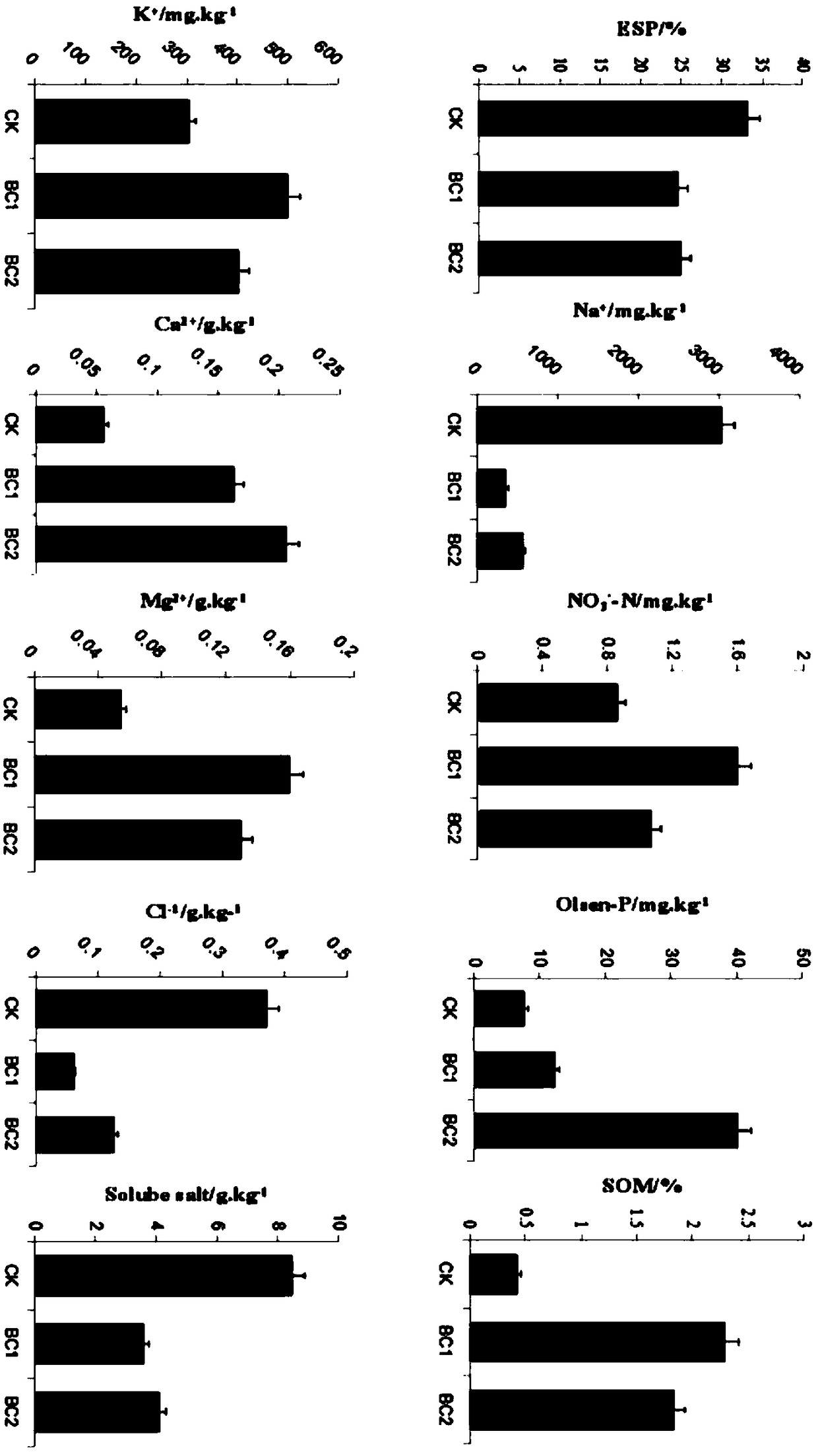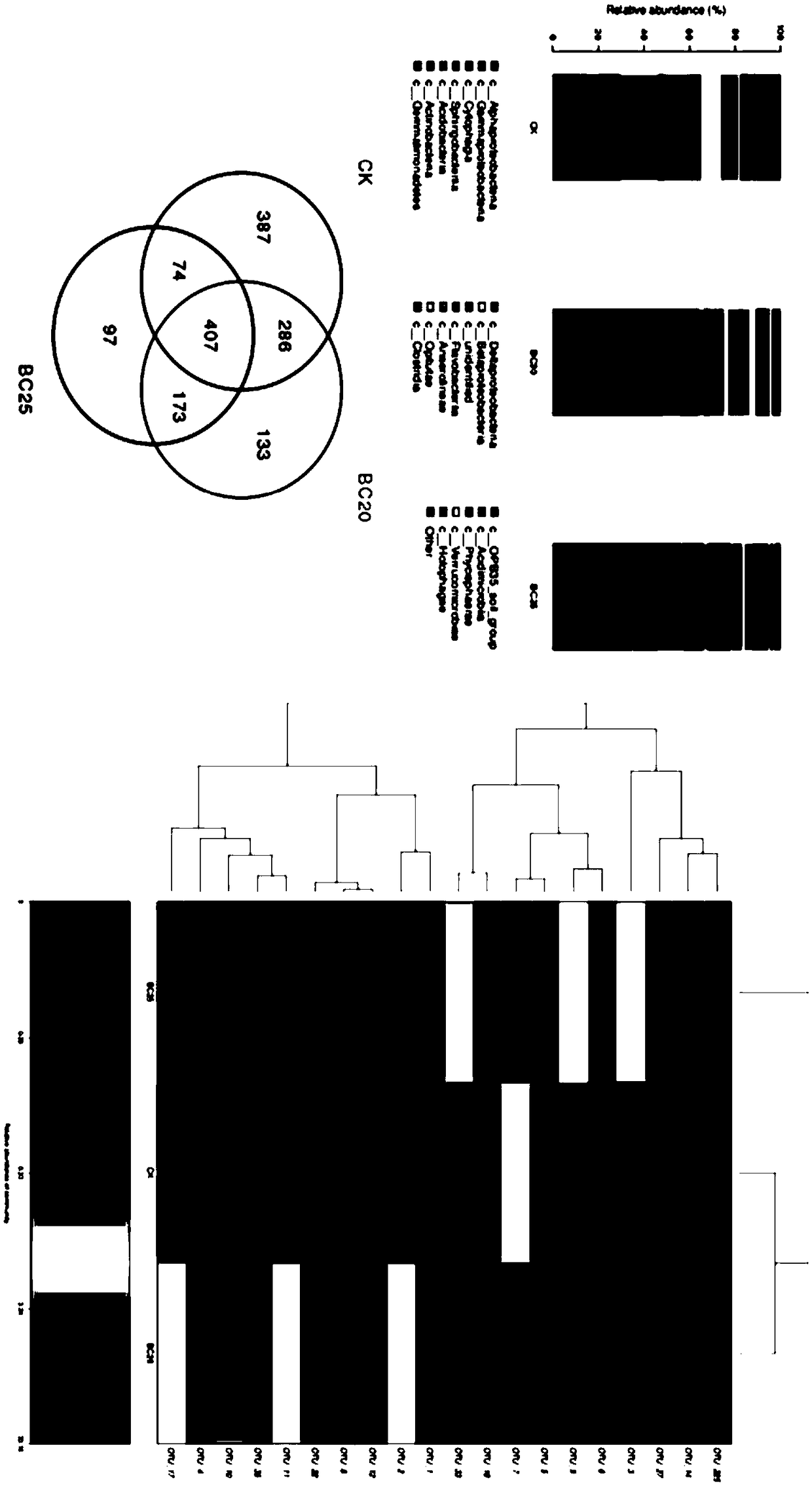Method for in-situ restoration of saline-alkali land ecosystem in Yellow River delta by using triarrhena lutarioriparia and biochar
An in-situ restoration and ecosystem technology, applied in the direction of soil preparation methods, botanical equipment and methods, fertilization methods, etc., can solve the problems of difficult consolidation, downstream water source pollution, salt pressure effect, high cost, etc., and achieve good palatability
- Summary
- Abstract
- Description
- Claims
- Application Information
AI Technical Summary
Problems solved by technology
Method used
Image
Examples
Embodiment 1
[0027] Example 1: The Miscanthus species used is Nandi, and the biochar is furfural residue.
[0028] The method of using Nandi and biochar to restore the saline-alkali land ecosystem of the Yellow Triangle in situ, including 1) amendment addition, 2) Miscanthus planting, 3) Harvesting treatment;
[0029] The specific step 1) adding the improver is: the soil pH is 8.5, the salt content is 0.75%, the soil property is sandy clay loam, and the organic matter content is low, so it is suitable to apply 3% biochar. Application method: 1. Level the land, 2. According to the soil density of the improvement site 2.01×10 3 kg / m 3 , The planting depth is 20cm, how much is the added amount of biochar calculated? The amount of biochar added is 3% of the soil weight, and the calculation method of soil weight is soil weight = surface area of the improvement site * planting depth * soil density, for example, the amount of biochar added per square meter is 12kg; 3. Will calculate Spread t...
PUM
 Login to View More
Login to View More Abstract
Description
Claims
Application Information
 Login to View More
Login to View More - R&D
- Intellectual Property
- Life Sciences
- Materials
- Tech Scout
- Unparalleled Data Quality
- Higher Quality Content
- 60% Fewer Hallucinations
Browse by: Latest US Patents, China's latest patents, Technical Efficacy Thesaurus, Application Domain, Technology Topic, Popular Technical Reports.
© 2025 PatSnap. All rights reserved.Legal|Privacy policy|Modern Slavery Act Transparency Statement|Sitemap|About US| Contact US: help@patsnap.com



